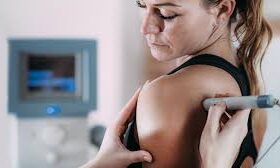“Prevention strategies of the polio disease involves taking the polio vaccine, practice good hand hygiene, take a high dose of vitamin C, consider taking the vitamin B complex, and Use Ayurveda medicine”.
It has been around since ancient times, and there are many myths and legends about it, from the way it causes infantile paralysis to the dangers it poses to the elderly. This article will look at some of the most common myths about polio and what it can do to our health. The answer may surprise you, but luckily, there are many effective ways to prevent it. Read on to learn more!
What Is Polio?
Polio is a viral disease spread by the faeces and secretions of people with the virus. This virus is easily spread through contaminated water and food and is more common in areas with poor hygiene or weak water systems. You can also contract the disease through sneezes carried by contaminated surfaces. Infection can also be acquired by breathing in droplets from the mouth and nose of an infected person.
What Are the Symptoms of Polio?
The vast majority of people infected with polio do not show any symptoms. Still, the disease can be very painful for those who do, with the most common symptoms being fever and malaise. Some people even experience severe muscle pain and drowsiness. But in severe cases, paralysis can occur.
While most polio infections do not cause any symptoms, up to 5% to 10% of infected people will suffer permanent paralysis. Those paralyzed might require lifelong care even if they were not exposed to the disease when they were younger.
Common symptoms of polio include;
- Stomach upset
- Headache
- Fever
- Tiredness
- Sore throat
- Stiffness of muscles at the neck and back
- Abdominal pain
- Vomiting
The symptoms listed above are classified as the “Non-paralytic Polio” symptoms. They don’t get you paralyzed and normally go away on their own within 10 days. But when you’ve got the “paralytic polio”, you will experience;
- Loss of reflexes
- Muscle pain or joint weakness
- Paralyzed arms and legs
- Meningitis
- Slacked limbs
Over time, polio can pose severe risks to even your life. You may start to have other “post-polio syndrome” symptoms. These symptoms include;
- Trouble breathing and swallowing
- Loss of muscles
- Sleep disorders
- Difficulty in handling low temperatures
What Causes Polio?
You get polio from small RNA viruses, which are members of the Picornavirus family. Like a contagious virus, polio spreads through contact with infected faeces. At times, it can also be spread through sneezing or coughing as this virus inhibits the throat and intestines.
Who Can Get Affected By The Polio Virus?
People living in dirty environments with low access to running water or a water closet often get infected from drinking contaminated water. Even by just living with someone who has the virus, you can get affected too. Also, pregnant women, people with an already weakened immune system (like HIV patients), and young children are at a higher risk of getting affected by the poliovirus.
5 Proven Ways To Prevent And Treat the Polio Virus
Currently, there isn’t any known cure for polio, but there are some preventive measures you can apply. These strategies have been proven to reduce your risk of getting infected with the poliovirus.
Use Of Polio Vaccine
The polio vaccine helps your body combat the poliovirus with ease. Before the vaccines were made in the 1950s, thousands of people were paralyzed by the poliovirus each year. When the vaccine was made available, there were not less than 10 cases of polio recorded in the US.
Proper vaccination is the most effective way of protecting against polio infection. There are basically two types of polio vaccines;
- The inactivated Poliovirus Vaccine (IPV)
- Oral Poliovirus Vaccine (OPV)
Let’s have a closer look at the two types of polio vaccines.
Inactive Poliovirus Vaccine
The IPV has proven to provide immunity to the poliovirus and protects strictly against paralytic polio.
How To Take This Vaccine
For children: 1 dose at 2 months, 1 dose at 4 months, 1 dose at 6-18 months, then a final booster shot for polio at 4-6 years. That’s 3 doses in total before the booster shot.
For Adults: if you did take the polio vaccine when you were a kid, further vaccination isn’t needed. However, adults need to be vaccinated with the polio vaccine if there’s a high risk of getting infected by the condition. They are required to get 3 doses of IPV;
- 1st dose at anytime
- 2nd dose at 1-2 months after the 1st dose
- 3rd dose at 6-12 months after the second dose
- Then wrap it up with a booster shot of polio.
· Oral Polio Vaccine (OPV)
The oral polio vaccine is termed the “Vaccine of Choice” as it is recommended for use in polio-endemic regions. This polio vaccine is administered through the mouth. It’s highly effective as it leads to the growth of antibodies that combats all forms of the poliovirus. It also curbs the spread of poliovirus in the patient’s nervous system, thereby protecting the body from paralytic polio.
Take High Doses of Vitamin C
Vitamin C is a known natural remedy for polio. When an adequate amount is taken, it can kill all the poliovirus organisms. You should take 20,000-40,000 mg of vitamin C daily to treat polio. But try consulting your doctor before taking the vitamin C.
Also, you should consider consuming foods that are rich in Vitamin C. food sources of vitamin C includes;
- Black currant
- Kiwifruit
- Oranges
- Strawberries
- Redpepper
- Guava
- Green pepper
- Broccoli
- Brussels sprouts
- Pineapples
- Cauliflower etc
For better results, do not throw away some parts of the fruit. Like oranges, after peeling, you can blend everything together. You can make good smoothies with them as you can also have a veggie addition to them. Use raw honey as a sweetener and consume it immediately. Do not boil any of the vegetables before use. If you must, apply small heat to it as excess heat destroys vitamin C.
Practice Good Hand Hygiene
Another notable way of preventing the spread of the poliovirus is by practising good hand hygiene. Always disinfect your hands after any contact with materials or patients suffering from polio or the surrounding by applying a virucidal hand disinfectant. If you are a caregiver or medical personnel, always wear your gloves. Upon removal, disinfect your hands with virucidal disinfectants.
Take Vitamin B Complex
Vitamins as a whole have proven to be effective at preventing polio. One of these is the vitamin B complex. Studies even show that a deficiency in this vitamin can leave you highly susceptible to the poliovirus. During the polio epidemic, practitioners gave polio patients vitamin B12 injections, and the results were highly impressive. However, self-medication isn’t recommended as this vitamin can interact with the polio vaccine and can cause some side effects.
Use Ayurvedic Treatments
Ayurveda is an ancient traditional healing method used by the Indians. This method effectively reduces the symptoms of polio. It fastens the recovery phase while suppressing the post-polio syndrome from reoccurring. Different kinds of Ayurveda medicines known to treat polio include;
- Licorice roots – This remedy is great for poliomyelitis. All that’s needed of you is to take the capsules twice daily.
- Ginger – Ginger is a known natural ingredient that aids in treating the symptoms of polio. Polio patients can, however, eat raw ginger either in small or large proportions 2-3 times daily. You can also mix ginger with lemon tea and drink it three times daily. It can also be incorporated into your dietary plan while getting a full body massage with ginger essential oil.
- Cat’s claw – The cat’s claw remedy has been known for ages to fight poliomyelitis regularly when taking the extract capsules, i.e., 2-3 times a day.
- Black pepper, coriander and funnel – This should be incorporated into the patient’s diet for optimum results.
- Astragalus – You’re advised to take the extract capsules of this drug two times a day.
Final words
In all of these always try to check yourself for notable symptoms where you’re living in a polio-endemic area. If you by any way feel uncomfortable after receiving a shot or maybe have an allergic reaction, try to tell your healthcare provider immediately.












